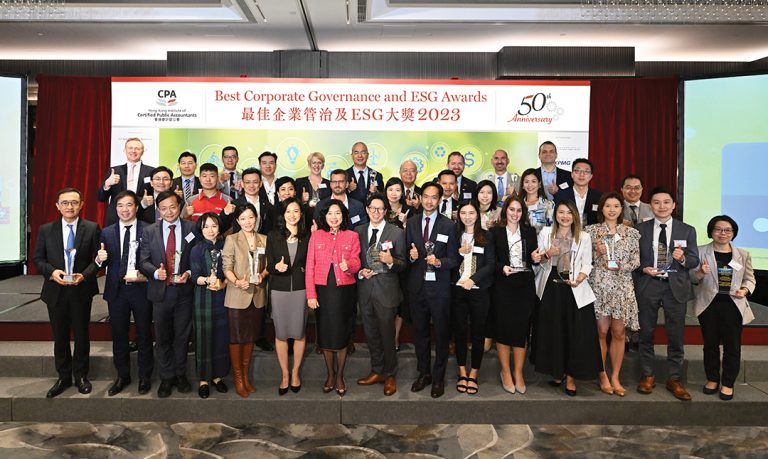Think of a mining company that extracts copper ore from land it has rights to, and turns this ore into a product, which it then sells. Its accounts may indicate a good profit, but they are unlikely to put a monetary value on the negative impact it is having on the environment.
“If one brings this into the picture, the results of the company may look much worse,” says J Robert Gibson, Adjunct Professor at the Division of Environment and Sustainability, Hong Kong University of Science and Technology.
Natural capital accounting is a type of accounting that, as well as recording traditional information such as monetary transactions, assets and liabilities, on a company’s balance sheet, also tries to measure its dependence on the natural world.
.
Unlike traditional corporate social responsibility, which looks at the impact a business has on the environment and society, natural capital accounting also takes into account the impact the environment can have on a company.
The term “natural capital” covers everything from air, water, land, minerals and forests, to biodiversity and ecosystem health.
The practice of natural capital accounting is still in its infancy, and only a small number of companies worldwide have implemented it so far. “The reality is that most businesses are not operating and making decisions with the sustainability of natural capital in mind,” Stathis Gould, Deputy Director of the International Federation of Accountants (IFAC), says.
“Many businesses have not assessed how dependent they are on natural capital, nor how opportunities and risks surround this dependency.”
Natural benefits
There are a number of benefits to companies from implementing natural capital accounting, according to experts.
Mardi McBrien, Managing Director of the Climate Disclosure Standards Board, a member of the Natural Capital Coalition, a global, multi-stakeholder platform for supporting the development of methods for natural and social capital valuation in business, points out that natural capital accounting enables companies to make better, informed decisions by working out how dependent their business model is on natural resources, and the impact of their actions.
She adds that the practice can also help companies to identify opportunities and boost returns if they measure, account for, and manage natural capital differently, for example through finding efficiencies in production or promoting product innovation.
Pat Nie Woo, Partner and Head of Corporate Social Responsibility at KPMG China, and a Hong Kong Institute of CPAs member, agrees: “It really helps companies to understand their environmental impact with numbers. Everything is turned into almost a profit-and-loss, which is a way people like looking at things.”
“It really helps companies to understand their environmental impact with numbers. Everything is turned into almost a profit-and-loss, which is a way people like looking at things.”
Gould points out that the practice can also assist in risk management, with chief financial officers increasingly responsible for taking into account all relevant factors and risks in corporate and financial decision-making and reporting.
“As such, they must ensure natural capital is treated as a business issue that is understood and managed by the business, as well as being disclosed to investors if it has a material impact,” he says.
The practice can also be helpful for investors in understanding a company. “It provides a more complete picture of the extent to which a company is creating or destroying value. From this we can see how sustainable it is and hence its value,” Gibson says.
Hong Kong-based conglomerate Swire Pacific began testing natural capital accounting in 2014 to evaluate the environmental impact of certain of its manufacturing operations. Electric company CLP Group has been doing integrated reporting, which includes a natural capital element, since 2011.
David Simmonds, Group General Counsel and Chief Administrative Officer for CLP Group, explains: “Integrated reporting focuses on trying to integrate broader principles into business considerations. It looks beyond pure short-term financial results and gives a much broader view on the business that is longer-term focused.”
CLP considers different “capitals,” such as financial capital, social capital and natural capital. One member of the Group Executive Committee is given responsibility for each of these capitals, while they are all also members of the Sustainability Committee, which reports to the board.
“This ensures these things are truly integrated from board level all the way down though the company,” Simmonds says.
In terms of natural capital, CLP focuses largely on climate change and the risks and opportunities this brings to the business, as well as looking at the water that is used in power generation and other air emissions that are not relevant to climate change.
“We report on a variety of metrics for carbon intensity and set goals for ourselves. We also set targets for renewable energy and non-carbon producing energy in our portfolio. It has been a very valuable exercise for us,” he says.
From theory to reality
Unsurprisingly, companies face a number of challenges in introducing natural capital accounting, not least of which is quantifying the value of natural resources. “What monetary value are you going to put on water or plants? These numbers tend to fluctuate in different parts of the world, and finding these numbers is not that easy,” Woo says.
Gibson points out that it is unusual for these values to be sufficiently defined for natural capital numbers to be added to financial capital ones in order to give a meaningful total.
Instead, he thinks it is better for a company to determine its most significant impacts on natural capital, and then provide a narrative report on what is being done to manage them.
Another challenge for companies is finding the right methodologies to collect the data they need for natural capital accounting, with McBrien warning that gaps in data can lead to unintended selective accounting.
“There is also the risk that information from natural capital accounting may not be palatable to boards and investors,” she says.
Simmonds says one of the biggest challenges CLP encountered was the change in mindset needed for integrated reporting.
“You have a long history of systems, expertise and processes that have built up to support financial reporting. When you start to broaden beyond the financial metrics, they are not there to the same level,” he says.
He adds that there are also challenges over how you make sure the metrics used follow the right standards, that the information you collect is reliable and that you can provide the right assurances over it.
Gould thinks the challenge for companies begins once they have put numbers on their natural capital use and impacts, and estimated the true cost of their products.
“The key question becomes how to use the information to change the business strategically and operationally. If companies had to pay full costs of natural capital, it would radically reduce their profits.”
Another potential stumbling block for companies interested in introducing natural capital accounting is that there is currently no universal approach. The Natural Capital Coalition has set out a protocol that unifies various methodologies and approaches to natural capital accounting, in a bid to offer an internationally standardized framework to provide comparable information between companies and industries, but not all companies follow this framework.
McBrien adds that although some work has been done by the Sustainability Accounting Standards Board in the United States through industry-specific standards and protocols to try to drive some standardization, more work in this area is expected in future.
Getting started
For companies interested in introducing natural capital accounting, McBrien advises against trying to apply it to their whole business in one go, and suggests starting with a small area, such as a particular product or supply chain, and working their way out from there.
She also recommends using the Natural Capital Protocol to collect and analyse the necessary information to inform internal decision making, as well as the Protocol’s framework to present the information to investors using the same rigour they would for financial information.
The Protocol sets out a four-stage process to guide companies through implementing natural capital accounting. It begins with getting companies to think about why they should conduct a natural capital assessment. The second phase involves setting the scope, defining the objective and deciding which impacts or dependencies are most material. Next, it suggests companies measure their impact and dependencies and put a value on them. The fourth phase involves interpreting the results from the previous phases and deciding what action to take.
McBrien adds that the Climate Disclosure Standards Board has also published its own framework for reporting environmental information, natural capital, and associated business impacts to help companies put the information into mainstream filings for investors.
“To write a good integrated report requires you to be thinking about the relevance to the business throughout the year.”
Gould adds that IFAC also provides guidance and shares knowledge on natural capital accounting through its Global Knowledge Gateway to support its members.
Unlike financial reporting, where reports are prepared quarterly or annually, Simmonds says integrated reporting is a year-round process.
“To write a good integrated report requires you to be thinking about the relevance to the business throughout the year.”
He adds that companies that decide to do it need to commit and make sure they get the governance right from board-level all the way down the organization, ensuring appropriate resources are in place and sufficient senior attention is given to making the right decisions.
But Woo thinks it will be some time before companies in Hong Kong adopt natural capital accounting.
“I think companies are coming to the stage where they see the value of environmental, social and governance (ESG). There are opportunities for boards to level up the importance of ESG, and that will bring them to the next phase of looking at the Task Force on Climate-related Financial Disclosures, and then integrated reporting. That will happen before natural capital accounting happens.”
The role of accountants
Accountants have a significant role to play in helping companies adopt natural capital accounting. “The finance teams have a level of experience and expertise based on the decades of preparing audited financial statements. That is gold for the rest of the organization if you are doing this for the first time,” says Simmonds.
McBrien agrees: “Accountants already have the skills to measure, report data, and present information. These are the same skills that are needed for natural capital accounting.”
She adds that as 80 percent of a company’s value is intangible, accountants are best-placed to help established systems to report this.
But Woo thinks an ESG element needs to be included in accountants’ qualification schemes to make them better equipped for the task. “If you look at a traditional CPA, they are starting from scratch with a lot of this stuff. If we can integrate ESG into CPAs’ capabilities, then that would be a major step forward,” he says.
He adds that currently very few sustainability professionals come from an accounting background, with people instead typically coming from an engineering or environmental one.
“We need to see more sustainability professionals with financial backgrounds. When that happens, I think the profession will be much more capable of influencing their clients.”
Gibson points out that it is also important for accountants to work collaboratively with other departments in a company. “Many of the numbers needed for natural capital accounting come from the engineering or production departments in a company. I’ve found that this is best done if the engineers and the accountants work closely together,” he says.
“The engineers provide the technical knowledge and make the measurements, and the accountants ensure there is a good system of internal control which confirms the reliability and consistency of the numbers reported.”
Accountants can also play a role in helping senior management and investors understand the importance of natural capital to a company. “Natural capital remains an elephant in the boardroom, absent from balance sheets and business decisions,” says Gould. We are starting to see this tide begin to turn among investors with a longer-term investment horizon, but major gaps still exist.”
Simmonds points out: “There is more and more information that shows a link between long-term financial performance and companies that do this sort of thing well. Paying attention to these sorts of issues over the longer term is a critical way of ensuring the long-term health of the business.”
This month, PwC in the United Kingdom released Integrating Natural Capital in Risk Assessments, a report in collaboration with Natural Capital Finance Alliance, the United Nations Environment Programme, and Global Canopy, an anti-deforestation NGO. It provides a framework to help banks identify key areas of natural capital risk associated with the businesses to which they lend. It is now being trialled in Peru, Columbia and South Africa.



















